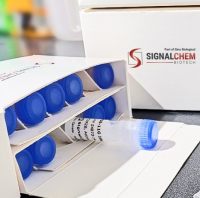Identification of Mast Cells and Mast Cell Subpopulations
互联网
593
Mast cells generate mediators of inflammation which are stored in granules and secreted on activation either by allergen crosslinking of membrane-bound IgE or through other stimuli. Most methods for mast cell identification rely on the histochemical detection of constituents of the secretory granules. Although staining for mast cells with histochemical stains can be rapid and relatively inexpensive, it is not always possible to distinguish reliably between mast cells and basophils in tissues. A further problem with the staining of mast cells with commonly used basic dyes is that the reagents employed to fix the tissues can influence the results, leading to confusion regarding the numbers of mast cells present in various tissues. Recognition that there is considerable heterogeneity between mast cell populations in the degree to which staining properties are lost with formalin fixation has led to mast cell subsets being defined on this basis.
The development and application of procedures for identifying mast cell proteases has led to important advances in our understanding of the role of mast cells and in the nature of heterogeneity in man. The techniques described here should allow the reliable detection of mast cells and mast cell subsets in a range of tissues and cell preparations. There will be a continuing need for validation, for consideration of potential sources of error, and for the development of new and more reliable techniques for mast cell identification.









